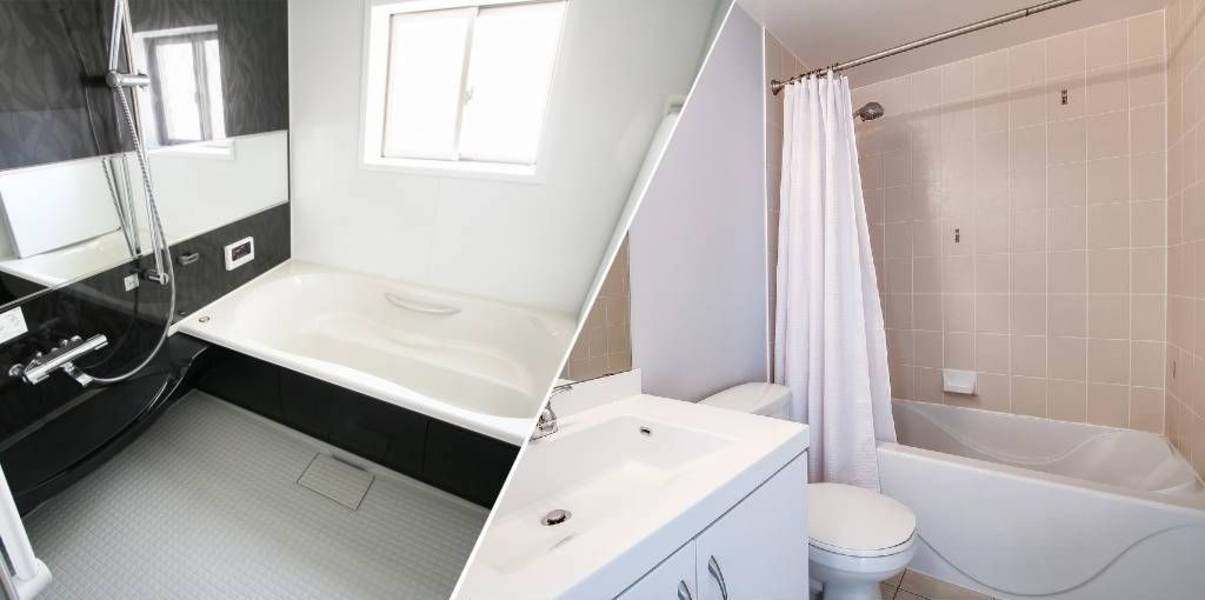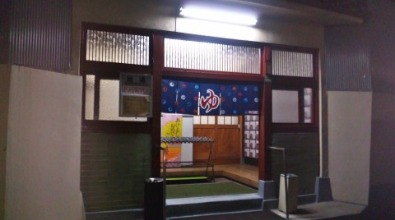Japanese Bathrooms: Why are they Different?
Wednesday, September 21, 2022
How Japanese bathing culture dictated the design of modern bathrooms

[Edited: May 28, 2024]
When one thinks of a standard bathroom most would assume that a bathing area (either bathtub or shower stall) toilet and sink/basin are all compactly assembled into one room. This seems to be the most common layout for most modern bathrooms across the globe.
However, in Japan the bathrooms are different. But the question is why? For most, it may seem obvious and convenient for the bath/shower sink and toilet to be all in one space but there is a different logic to this in Japan.

Japanese Bathing Culture
Traditionally people in Japan would bathe in sentos (public baths), and only extremely wealthy households could afford baths in their homes. And because bathtubs in households were rare before WWII, all bathtubs were custom-made.
At the public baths, the system of washing the body outside the tub and then soaking in hot water was how the communal bathing spaces were used. After WWII when new homes were built with bathtubs this culture of bathing remained.
In essence, the purpose of a bathtub was, and still is, a place to relax, whereas the purpose of a standard modern bath or shower area is to clean.
Layout of Bathrooms in Japan
In Japanese homes, the toilet, sink, and shower/bathtub are all in separate designated areas. The toilet will be in its own room, and the sink will be separated from the bathing area by a door creating a barrier between the “wet” area and the “dry” area.
Unlike modern bathrooms seen across the world, in a Japanese bathing area, the shower is outside the tub which is in line with traditional Japanese bathing culture. One washes their body outside the tub and then soaks in the tub to relax.
In a recent real estate survey, 80% of people looking for a new apartment said that they wanted their bathing area and toilet to be separate. Given the way Japanese homes are built, there are several reasons for this preference.



1. Single Bathroom Homes
Unlike many places in the world, even larger homes with 3-4 bedrooms will still only have one sink, one toilet, and one bathing area. By separating the spaces they can be used simultaneously by different people.
2. A Space to Relax
Bathing time is almost ritualistic in Japan. At the end of the day, everyone in the family takes turns bathing and then soaking in the tub. The bath is a place to unwind before bed. Therefore, having a bathtub in the same space as a toilet is the opposite of relaxing, in fact, most Japanese people get queasy at the idea of bathing within the eyeshot of a toilet.
3. Saving Water
Because bath water is not used to clean the body but rather to relax, the bath water is filled once and is used by all members of the household. High-tech bathtubs nowadays have automatic temperature control, water reheating, and water level maintenance features so the water level and temperature remain consistent over several hours.
4. Easier Maintenance
The first rule of home maintenance is to avoid humidity and water. With the setup for a Japanese bathroom one-third of the space is constantly wet and humid. By separating the bathing area from the sink and the toilet the amount of humidity the latter two are exposed to is greatly reduced thus preventing mold buildup or other wear and tear associated with high humidity.
This is not to say that modern bathrooms that are common internationally cannot be found in Japanese apartments. However, they are more often included in apartments designed for single occupancy in order to save space. When looking for an apartment specifying the type of bathroom you prefer can help you find a space most comfortable for you.
While the modern Japanese bathroom layout may be a bit difficult to get used to at first, separating the sink, toilet, and bathtub/shower has its advantages, you may even find yourself wondering how you will go back to a normal bathroom in the future!
About the Author

I've been in Japan so long that I say my heart is Japanese. And still this country impresses me from time to time. In those moments I think, "That's why I love living in Japan."








